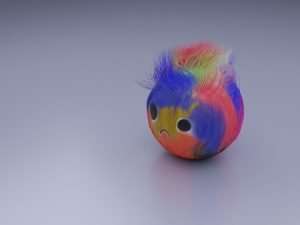Buying art is often one of the best ways to grow your wealth. But it is not without its risks, especially when you are new to buying art.
If you want to buy art and grow your wealth in the process, then follow these guidelines:
1. Start with a plan to buy good art. Go for quality, rather than a bargain.
2. Make sure that you are buying from a reputable dealer or auction house.
3. Know something about what you are buying; don’t just go by price tags.
4. Research the artist and his work before you buy. This will help insure that you are getting what you want; and there are no hidden problems with the work.*
5. Buy only works of art that have been thoroughly documented by a credible authority source such as a museum or an auction house catalog.*
6. Understand the difference between condition reports, catalog descriptions, and other parts of a written description (see below).*
7. Have the work inspected by an expert if necessary.*
8. Be realistic about what you can afford; and if you can’t afford it now, save up.*
9. Don’t buy anything that doesn’t suit your decor or else store it carefully so that it stays as
When you are looking for something to buy, as with most purchases, it’s good to have a budget in mind. This is especially true when you are buying art.
You should also have in mind what kind of art you would like and what kind of artist you would like to support. An artist who makes work similar to the one you already own will be easier to live with than another artist whose work is completely different. A local artist or an artist who makes affordable work may be more likely to appreciate your patronage than an international star whose work sells for thousands or even millions of dollars.
So you have both the cheaper and easier to live with artwork and the local, friendly, affordable artist and your budget is still too low. What do you do?
If you are working within a budget and not just looking for a bargain then it may be wise to pass on this piece and look at others in the show or gallery while they still have some pieces available. If you are lucky there will be another show later that month or another gallery that has work by this artist. If not then maybe they will be showing again in 6 months or a year so it might be worth asking if they can send you an email when the next show is scheduled. (This is assuming
If you are looking to buy art as an investment, there are a few simple things to look for. Art is generally not a good investment unless it comes from an artist with a proven track record of selling at auction. The artist should have work in at least one major museum, which means you can look at the pieces in person and see how they are displayed. Also, the artist should have been featured in at least one or two auctions that had good results. This is because no one buys art simply on the basis of eye appeal alone; there must also be some value attached to the piece for its historical significance or for its monetary value.
Easy to follow advice on how to look for value in art:
The art market is a tricky one. Buying art is not like buying a pair of shoes or a car, and there are many pitfalls for the unwary. Here is some advice about how to buy good art, and avoid the expensive mistakes that many buyers make.
Here are some suggestions for how to judge what you are buying:
1) Buy art from artists who are making new work that they care about; you’ll have the best chance of finding the next big thing.
2) Buy the best quality you can afford: be prepared to pay lots more than you think something is worth if it’s in a higher quality category.
3) Don’t buy too much of any one artist’s work. You know that old adage, “buy when there’s blood on the streets”? Well this is the opposite: buy when everyone wants an artist’s work, when it looks like everyone else has bought everything already. The only way to get a good deal then is to buy early. And that means waiting until you see an artist whose work you really love, and who has made enough so that each painting looks like it’s been made by hand and not by machine.
The most important rule: buy what you like. Sounds simple, doesn’t it? But it’s so easy to forget. I mean, let’s face it, unless you’re an art expert or collector, buying art can be a daunting process. Even if you are an expert or collector, you may be intimidated by the “how should I know?” question. Also, how do you find good art?
Sometimes when people ask me what they should buy as their first piece of art, I tell them to go to their local museum and wander around until something speaks to them. Museums often have great stuff in their permanent collections that is very reasonably priced. The same is true for galleries that deal only in contemporary art (sometimes called “new work”). If you see something that moves you and the price seems fair, ask about getting a catalog of the artist’s work so that you can keep an eye out for future pieces by the artist.
Also remember that sometimes a good way to get to know an artist is by buying his or her print editions or drawings. Prints and drawings are often less expensive than paintings and sculpture and they show the artists working process as well as his or her finished product.
It’s also a good idea to start your collection with things
Art prices are deceptive. They seem to be set by a free market, but in fact they are influenced by the opinions of people who are neither buyers nor sellers: critics, curators, art historians, gallery owners and dealers.
You may be able to figure out from a painting’s auction history what it is really worth, but you will also have to take into account the opinion of someone who knows nothing about art. And if you can’t figure out what a painting is really worth, discovering its market price is likely to be even harder.
You may be able to guess how much an art expert thinks a painting is worth, but you will have to know quite a bit about art yourself. And if you don’t like the work or don’t trust the expert’s taste or judgment, guesswork won’t help you much.
Let’s start by understanding the terminology and nomenclature from a non-professional perspective.
Art – artwork, paintings, drawings, sculptures, creative works that are intended to be viewed for pleasure and inspiration.
Artwork – paintings, drawings, sculptures and all other forms of visual art.
Fine Art – encompasses artwork from the ancient world to modern day and includes paintings, drawings, prints and sculptures.
Original Artwork – the only one of its kind in existence. The original piece is in its artist’s hands and not for sale. The original is a major part of an artist’s portfolio.
Music/Musical Composition – lyrics with music or lyrics without music but has been turned into sheet music by the artist or publisher. Sheet music is available at any music store or on the internet.
Tablature or Sheet Music – written instructions for playing a musical instrument (such as piano or guitar) that is used to reproduce the sounds of the music being performed. This is used in conjunction with a recording or live performance (listening). Tablature can be purchased at any music store or on the internet.
Arrangement – an existing song that has been changed to fit a particular instrument (or group of instruments) such as clarinet


